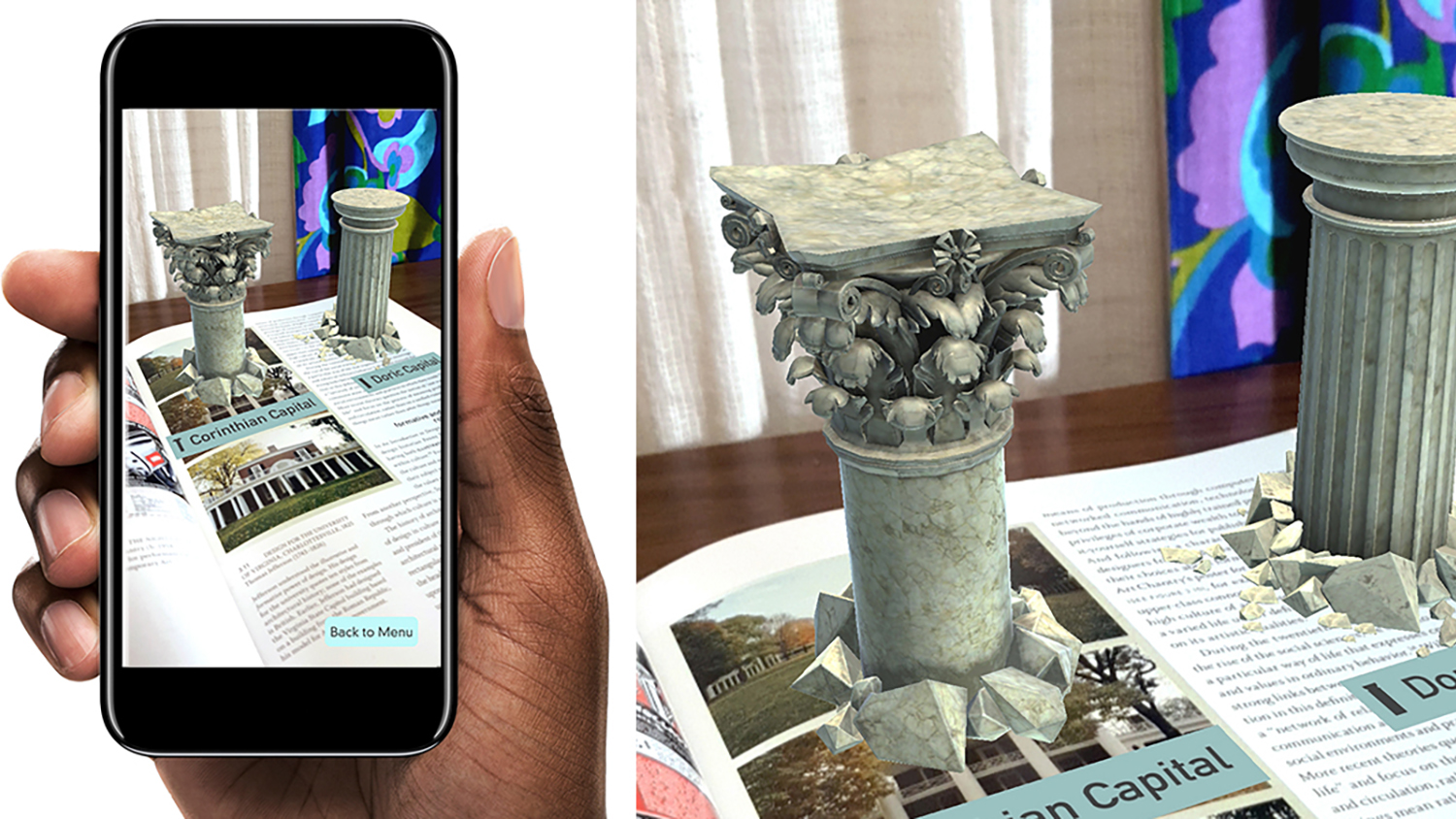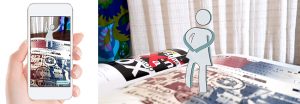Augmented Reality Brings New Life to Graphic Design Theory Textbook

DELTA team members involved in the GD 303 project include Rich Gurnsey, Stephen Waddell, Matthew Castro, Daniel Davis and Laurie Gyalog.
Augmented reality (AR) is described as bringing computer-generated images into a user’s real-world view. In other words, AR applications seemingly bring your surroundings to life.
Students at NC State are now experiencing exactly what that is like through the Graphic Design Theory AR application.
Created through a DELTA Exploratory Grant with Associate Professor Deborah Littlejohn, the app enhances the textbook used in GD 303: Graphic Design Theory and Practice.
“It is a tool that students can use in tandem with their weekly reading assignments to help them better understand and remember some of the theoretical concepts that are the subject of the course,” says Littlejohn. “There are 12 total AR experiences — one or two for each of the seven chapters in the course textbook.”
AR Impacting Student Engagement
Available for free on both the Apple App Store and Google Play Store, the AR app helps to improve student engagement and learning experiences.

Inside the app, students have a virtual guide to help them navigate the concepts behind major milestones of the graphic design field.
Students can also take control of a magnifying glass for a closer look at intricate magazine spreads and other image details.
The experience features galloping horses coming to life from a 19th century Eadweard Muybridge photo, a Futurist sound poem by Filippo Marinetti where words and letters animate off the page, and pop-up pop quizzes test knowledge along the way.
Each of these interactive features has given students a more memorable experience with the textbook content.

Littlejohn and her Master of Graphic Design teaching assistants, Gloria Jing and Syashi Gupta, are determining if students who used the AR app performed better on the midterm exam than students who did not use the app. Her initial early results are promising.
“I found it interesting in a couple of instances of some students who used the app didn’t get the theoretical concept term exactly right, but they were able to draw a picture of what they remembered from the AR experience,” says Littlejohn.
“Their sketches proved to me that the students who drew these pictures actually did understand the concept — even if they couldn’t recall from memory the exact terminology for the concept.”
Littlejohn also included an extra credit question on the midterm exam that asked students to self-report if they had used the AR app which resulted in many yes’s and comments of admiration for the app.
One student said, “It’s so cool!” with smiley faces and strings of exclamation marks, Littlejohn explains.
Some students also commented on their favorite experience within the AR app — a demonstration of how the 15th-century architect Filippo Brunelleschi’s invention of three-point perspective works in an image of the famous Renaissance painting, Ideal City.

“It really is cool to have the ability to change what you can see in an oil-on-canvas 2D painting by changing the vantage point, thereby shifting the viewer’s perspective, on the fly and in real time,” says Littlejohn.
A favorite for Littlejohn, “We managed to push the possibilities of AR differently in each of the 12 experiences — from objects popping off a page, to turning a 2D reproduction of a painting printed on a flat paper surface into a 3D model, to a walking talking ‘guide on the side’ who discusses the theoretical concepts informing the design of a poster.”
Development and the DELTA Impact
Lead Multimedia Designer Rich Gurnsey served as project lead and the UI/UX and motion graphics designer. Gurnsey implemented a few Agile practices into the design and development of the app.
“Since we used the minimum viable product approach during our development process, we were able to do product testing early and often. Each round of user feedback helped inform the product’s evolution,” says Gurnsey. “Throughout development, we made sure to prioritize, design, build and refine the app’s most essential and valuable features, which ensured the end product would provide a rich and captivating learning experience for students.”
Littlejohn adds, “DELTA was incredibly helpful, supportive and their feedback was invaluable. Their support was crucial for realizing the project objective to create an app that would be free for anyone, not just students, to download from Google and Apple stores.”
Littlejohn and the DELTA team are not yet done pushing the possibilities of AR.
“We are still working beyond the grant cycle to develop robust assessment tools so we can understand how AR can be used as an online course learning tool that is not only engaging but effective,” she adds.
Related:
- Categories:


